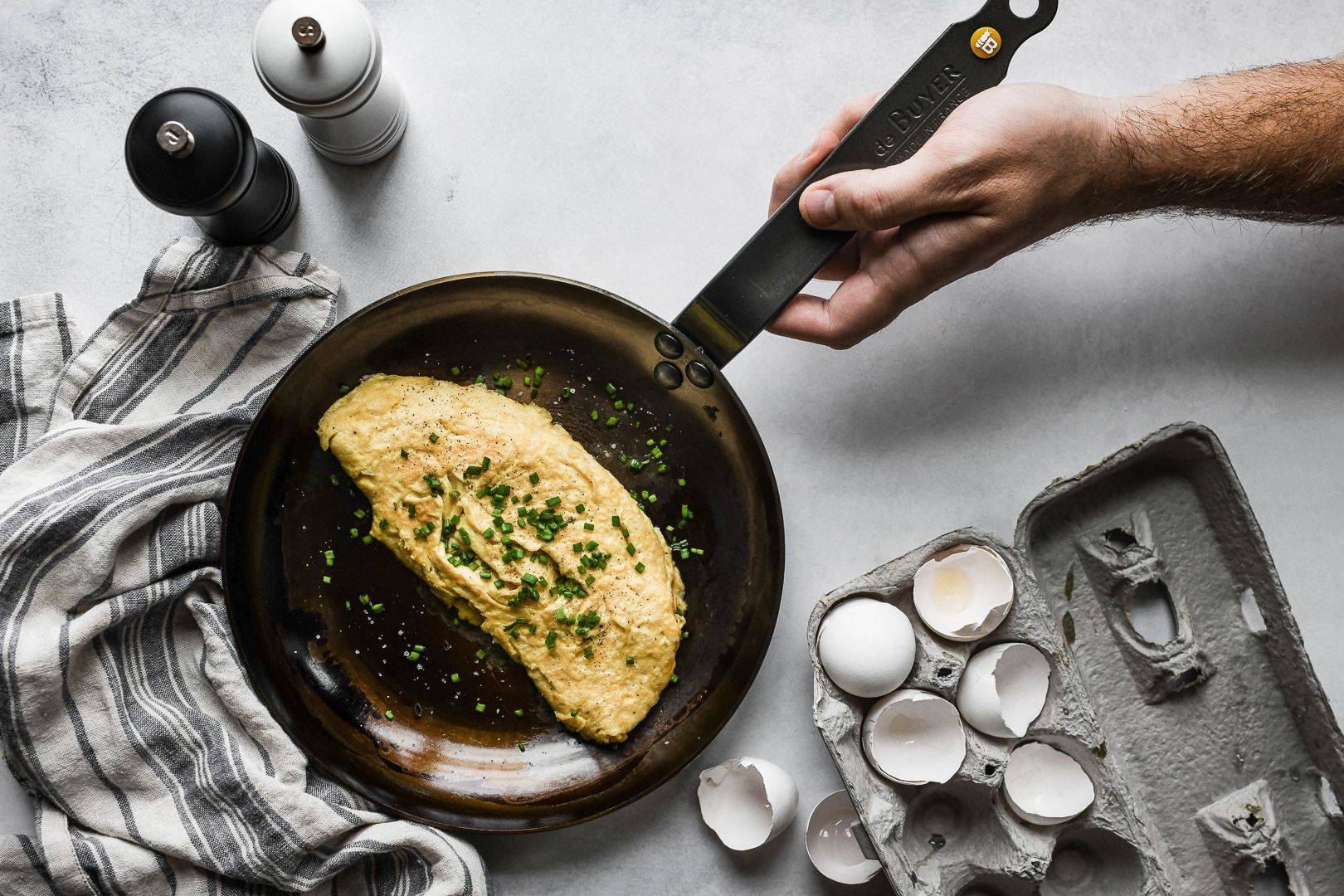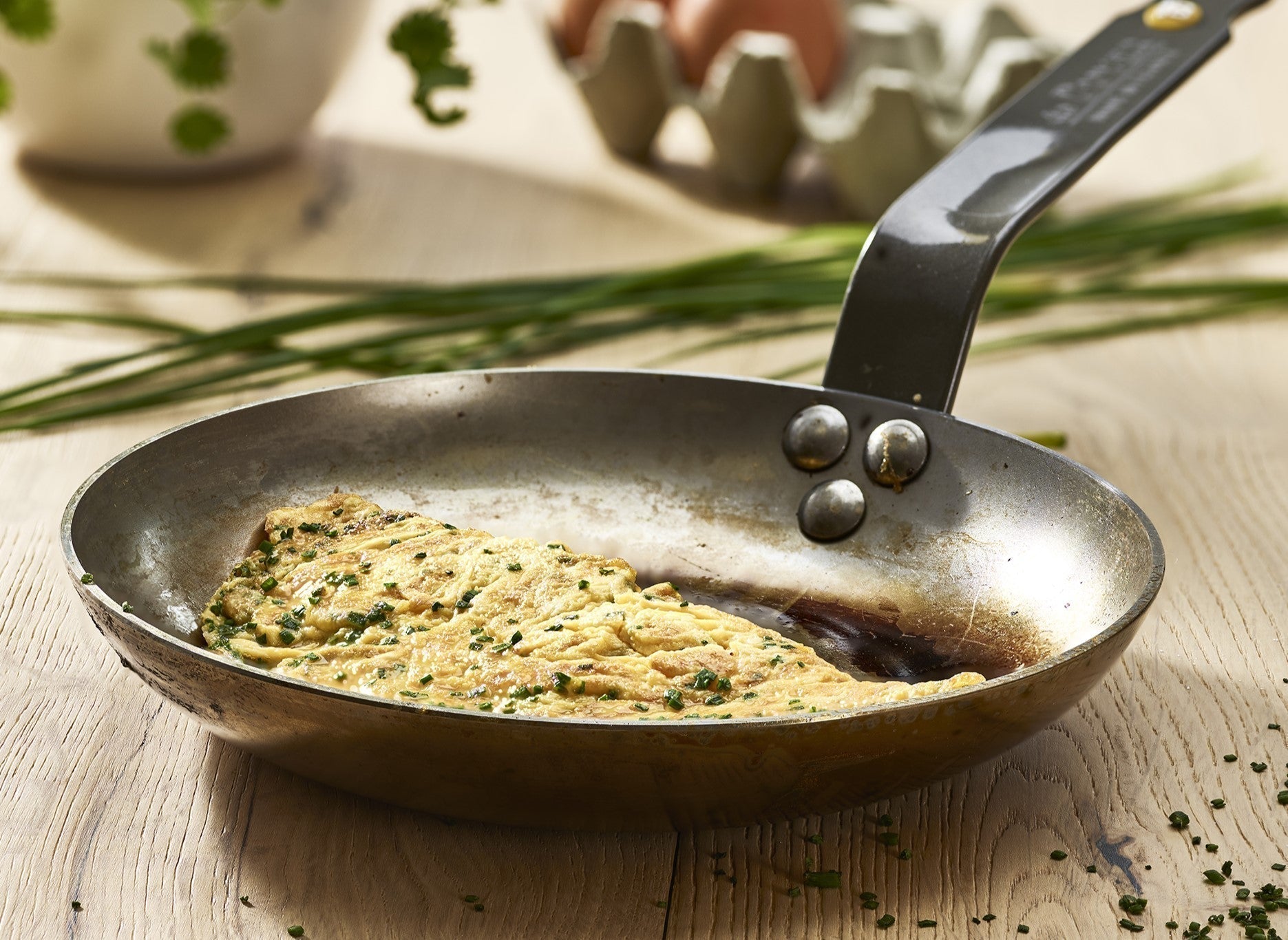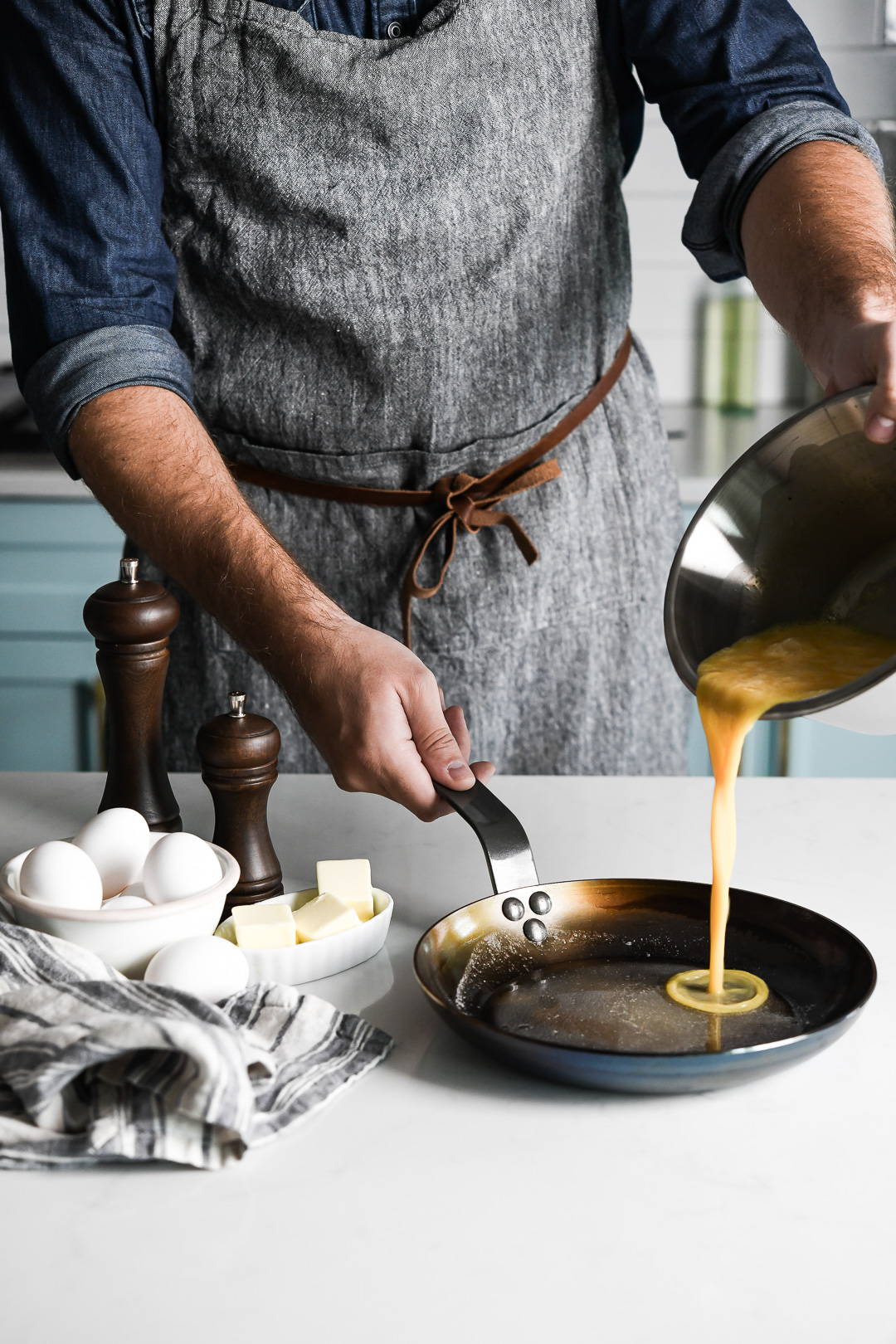The omelette might possibly be the perfect meal. It’s rich in protein, a great source of vitamin D, boasts a beautiful bright golden hue, and you can stuff it with just about anything.
It’s a quick and healthy meal that allows you to flex your creativity. What makes the challenge even more fun is that there’s more than one way to make an omelette.
Related: The Perfect French Crepe Recipe
Omelette or Omelet?
Why the difference in spelling? The prevailing theory points us to Noah Webster of Webster’s Dictionary fame. In order to differentiate the US from the UK during the American Revolution, he intentionally changed the spelling of several words to make them uniquely “American”.
What is a French Omelette?
The word omelette is French, but the roots of this soft cooked egg dish trace back to ancient Rome and Persia. The first recipe for the French omelette was published in the 1700s cookbook Cuisine Bourgeoisie. The word l’omelette literally translates to “the little blade”.
True to its name, the French omelette is thin and crepe-like with minimal fillings and is sometimes served with nothing more than butter and salt. It cooks quickly before being tightly rolled onto a serving plate.
When you cut into the soft-cooked, oval exterior, the interior ingredients stay a little on the runny side as compared to the American version.
What is an American Omelet?
When one miner struck gold, he went to a hotel restaurant and asked the chef to combine all of the most expensive ingredients. He whipped up an omelette of bacon and oysters, and it became known asHangtown Fry.
American-style omelets are heartier, filled with more ingredients, and cooked longer. Because the eggs aren’t moved around the pan as a French omelette requires, they are fluffier and form a golden brown crust.
Rather than an easy-style egg temperature, the American omelet is cooked to more of a hard temperature that forms a golden outer crust.
How to Make a French Omelette
Using a purpose-made omelette pan like the MINERAL B Carbon Steel Omelette Pan is really going to help you with this process, ensuring that your delicate bottom layer doesn’t tear when you transfer it to the plate.
It’s important to think about egg quality with a French omelette because their flavor profile tends to be much simpler. It starts with butter and salt for flavor and fresh herbs are often added as garnish.
A traditional French omelette might not get any more complicated than that.
Whisk
Crack the eggs into a small mixing bowl, then whisk them until the liquid is a uniform color. Then add a pinch of salt and whisk it in thoroughly.
Pour
Cooking the French Omelette
There are 2 versions of the French omelette: the traditional and the country style. For a traditional style, you’ll use your spatula to briskly move the eggs around the pan. You’ll want to continue doing this until the egg starts to set.
For a country-style French omelette, you’ll want to take a fork or spatula and push the outside edges of the omelette toward the center. Repeat this all around the pan a few times until there’s very little liquid remaining. Moving the eggs around in the pan is what provides the rippled, uneven texture of the finished omelette.
Both methods ensure that the egg cooks uniformly, staying soft until it’s ready to plate.
Click Here to Sign Up for the deBuyer’s Newsletter to Stay Up to Date on Our Deals and New Arrivals!
Finishing Touches
There’s also the classic French fines herbes omelette, in which you finely chop fresh chives, parsley, chervil, and tarragon and mix it in with the raw egg before cooking.
Folding Your Omelette
The French omelette is rolled-up in the pan before being plated, which requires a little finesse. When the egg is about 95% cooked, you’ll use your spatula to loosen the underside of one edge and slowly begin rolling it over towards the other end.
Once you’ve reached the other side, you’ll slide it out of the pan. Omelette pans have rounded bottoms and edges to help ease this process. If you’re opting for the country-style omelette, then you’ll simply fold one half over the other.
Serve Your French Omelette
If you’re really treating yourself, then take a bit of extra butter on the end of a fork and move it across the surface of your plated omelette. Then, top with flake salt, freshly ground pepper, and chopped herbs.
For the country-style omelette you can use a special technique of folding it in the pan, then adding a dollop of butter to the pan and allowing one side of the omelette to brown before flipping it inversely onto the plate.

Should You Add Ingredients to Your French Omelette?
The simple answer is that it’s up to you. If you’ve got fresh farm eggs and want to let that flavor shine, then stick with butter and a touch of salt. But it’s also fine to add a bit of shredded cheese, chopped herbs, or crème fraîche.
The thing to remember about a French omelette is that it’s a simple affair.
How to Make an American Omelet
The American-style omelet is less about technique and more about getting creative. Prep your raw eggs the same way you would with the French omelet. Then pour them into a buttered pan and allow the edges to get firm. Then, use your spatula to lift the edges one by one and tilt the pan so that the liquid fills the empty spaces. Repeat this until the eggs are about 80% cooked.
Now, add your fillings. When the eggs are about 90% cooked, you can go ahead and flip one half over the other to form a half-moon shape. The fillings might run a little, but after about 30 more seconds of cook time, you should be able to plate it without losing anything.
An omelet pan is useful here because it’ll make the move from the pan to the plate seamless.
Related: How to Season a Carbon Steel Pan
Fillers for Your American Omelette
Traditional fillings for an American omelet include shredded cheese, chopped bacon, and assorted vegetables. You can make one of America's most famous versions, the Denver Omelette, by adding cooked ham, green bell peppers, diced onion, and cheddar.
The American omelet doesn’t have a lot of rules to follow, so feel free to add whatever you’re craving.
Enjoy Your French or American Omelettes
You might love the challenge of perfecting your French omelette skills and also appreciate the creative aspect of dreaming up American-style omelet flavor combinations.
However you like your omelette, one thing is for sure. Omelette-making is a simple, healthy, and delicious way to whip up a quick meal that satisfies with every bite.
Click Here to See de Buyer’s Collection of Crepe and Tortilla Pans


